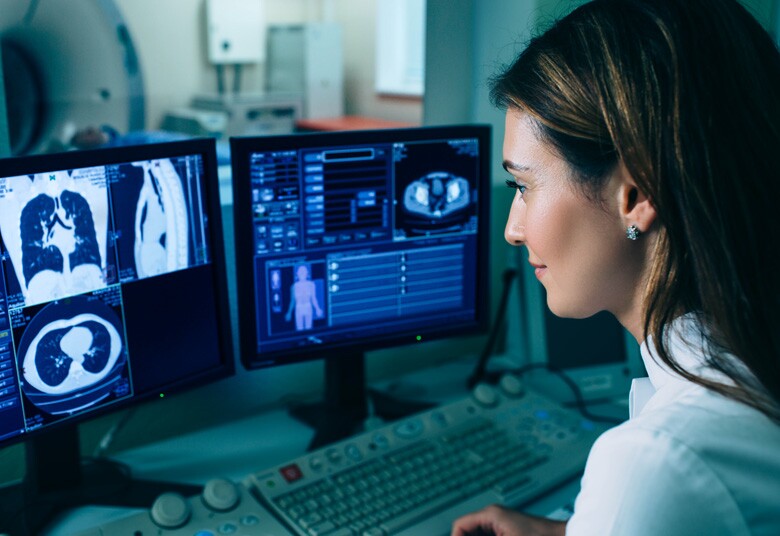Data Platforms to Power AI With Healthy Data

It takes more than just reams of data to reap the benefits of artificial intelligence. The true promise of AI is enabled by healthy data—data that is accessible, reliable, and clean—to offer up valuable insights. Achieving high-quality, trustworthy data is possible with the right underlying infrastructure and data management platforms in place, such as InterSystems IRIS data platform and InterSystems IRIS for Health.
InterSystems has developed a complete data platform that speeds and simplifies the development, deployment, and maintenance of real-time, data-intensive analytic applications in a variety of industries. Using the platforms’ built-in artificial intelligence capabilities:
- Hospitals are gaining a better understanding of which patients may be at greatest risk of sepsis or readmission
- Financial services firms have a line of sight into which loans might default
- Payers are able to suggest interventions for at-risk members to prevent a major health incident
- Businesses can forecast weather events’ potential impact on order fulfillment and supply chains, and
- Global manufacturers can identify equipment that is bound to break down so they can preemptively schedule necessary maintenance.
InterSystems technologies make it faster and easier for data scientists to collect, integrate, and normalize the data required to build and tune accurate AI models and incorporate them into real-time business processes. InterSystems IRIS and IRIS for Health provide a complete set of embedded integration capabilities, including out-of-the-box connectivity for a wide range of packaged applications, databases, industry standards, protocols, and technologies. In this way, InterSystems technologies are helping organizations leverage AI and big data to deliver innovative new services, create new revenue streams, improve customer experiences, and streamline business processes to gain competitive advantage — and realize value quickly.
Supporting AI Functions
InterSystems technologies speed and simplify the development, deployment, and maintenance of real-time, data intensive analytic applications to support a variety of AI functions:
Decision support
Mine peer-reviewed data to suggest a diagnosis, or enable physicians to understand what the data is saying about what they’re seeing
Resource management utilization
Monitor inventory against needs to ensure, for example, that medical equipment is available and allocated where it’s needed most
Cohort identification
Identify good candidates for clinical trials and provide insights based on real-world evidence; or enable an insurer’s call center to reach out to patients proactively to suggest wellness approaches, which could also decrease the long-term burden of care
Risk analysis
Identify loans that may be at risk for default, before a customer even misses a payment
Market trend analysis
Analyze market trends and their potential impact on transaction processing, including social media analysis to predict anomalies, such as financial events
Predictive maintenance
Maximize uptime by monitoring manufacturing devices to predict when they’re going to break down or to take production offline most efficiently to prevent longer downtimes due to system failures
Logistics and inventory management
Predict the impact of external events, like weather or other natural or manmade events, that could affect order fulfillment or supply and demand for inputs and end products, and to forecast production and transportation needs
Analytics
Help make use of data and deliver actionable insights to the right people at the right time
Support Patient Care

A 2020 IDC survey that evaluated the relative maturity of AI adoption for healthcare providers in Germany, the United States, and the United Kingdom found that the top three use cases were inferencing to improve data quality, reading images to assist in making diagnoses, and early identification of hospital-acquired infections.
Consider radiologists, who are increasingly turning to AI-powered technologies to make the most out of the growing volumes of ever-higher-resolution output from imaging scanners. AI-powered medical imaging systems can produce scans and help radiologists identify patterns and treat patients with emergent or serious conditions sooner.
HBI Solutions offers another example of the power of AI technology. Its emergency department’s risk modeling uses AI to help physicians understand whether their patients need mental health support. Providers can then plan their care around those needs, based on insights that are neither intuitive nor currently available to most doctors at the point of care.
Advance Bioengineering Discoveries
AI is key to analyzing the 3 billion base pairs of the human genome to identify the genetic sequences responsible for disease and uncover potential treatments. It is enabling fields like synthetic biology to advance research to combat antibiotic resistance, use imaging to diagnose skin cancers, and help develop individualized drug-based treatments for a host of diseases. Powerful technology like InterSystems IntegratedML is opening the doors to new discoveries that will improve patient experience and outcomes while reducing the cost of care.
Perform Demand Monitoring
snext is commercializing SaaS applications enabled by AI and machine learning for product categorization, inventory control, and demand monitoring. The next steps in its product roadmap include developing AI and machine learning models from the historical data in the systems, and embedding the models into the connected processes.
Identify Trends and Anomalies
Some applications only require executing AI models independently in batch mode. However, many others require incorporating AI models into business processes that execute in real time in response to events, transactions, or user actions. For example, fraud detection models are often incorporated into real-time credit card transaction processing systems to identify and interrupt potentially fraudulent transactions.
Assess and Manage Risk
One InterSystems healthcare customer has created 113,000 distinct features to support the development of its AI patient risk models. To handle such tasks with maximum efficiency, InterSystems IRIS stores data in the database as multidimensional arrays and uses horizontal scaling techniques. InterSystems IRIS thus provides high performance with fewer hardware resources for feature engineering tasks.

























